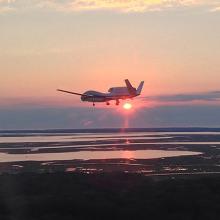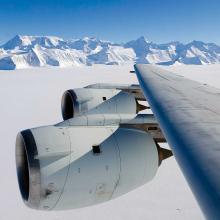NASA airborne and field investigation scientists have probably heard the acronym “ADMG” mentioned during a conference or meeting, but are unsure of how ADMG can assist them in their science, data, and metadata needs. In an effort to better communicate what the Airborne Data Management Group (ADMG) is all about, the team created a new infographic to share. The goal of this infographic is to serve as a quick “at a glance” representation of NASA IMPACT’s ADMG team and their important work.

The infographic summarizes what ADMG is, what they do, and why they do it. The primary focus of ADMG is the construction of an inventory containing information for all campaigns, platforms and instruments related to NASA-funded Earth science airborne and field data products. This inventory is called CASEI — the Catalog of Archived Suborbital Earth Science Investigations. ADMG works to curate additional metadata for campaigns, locate and ensure public access to NASA airborne and field data, and support scientists, data producers and providers with understanding and adhering to NASA’s open science requirements. Open science depends upon accessible and available data. For historical data, some collected as far back as the early 1980s, it’s a significant challenge to locate the data and gather vital metadata for use in improving data discovery and use. Some of these older campaign data collections are stored on personal drives or recorded on tapes now stored in NASA closets. As NASA focuses on open science and moves data holdings into the cloud environment, data rediscovery and responsible stewardship of these older assets are more important than ever, especially for their potential value in climate studies.
"ADMG improves awareness of airborne and field data challenges, seeks solutions to these challenges, facilitates effective communication for improved data discovery and stewardship, and integrates a variety of Earth observations collected by various science communities."
The global map at the bottom of the infographic identifies just a few of the 150 known campaigns that NASA has deployed and hints at how far reaching NASA’s airborne and field campaigns are. A few key campaigns are included, such as ABoVE, ABLE, CORAL, IceBridge, PacRim2, and SAFARI. Campaigns such as these in ADMG’s CASEI utilize more than just airborne instruments, they also include measurements made by field instruments placed either on land or in water. These are depicted by observation tower, ship and buoy icons on the map. For example, scientists often use buoys to monitor ocean currents and temperatures, and use instruments on research vessels/ships to obtain ocean water salinity or measure ocean winds.
The new graphic will be shared on the ADMG website and will be available at conferences and other meetings (e.g., with campaign science teams) to more readily communicate the full range of ADMG’s work.



